3D printing is an advanced form of printing that helps users bring their imagination to life. The sector has amassed a considerable amount of growth due to the rising need for customized products and parts across various industries.
3D printing can also be referred to as additive manufacturing because it involves the use of additive materials such as; polymer, metal, or ceramic to create desired product designs.
The use of 3D printers is not just limited to industries alone, some can be used at home. But before taking such a bold step, prior knowledge of how to 3D print must be acquired. This and many more will be discussed extensively in this article.
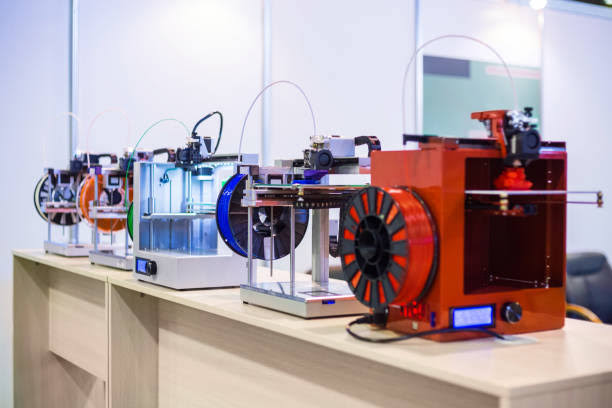
Basic Introduction to 3D Printing
3D printing is a great milestone in technological advancement. And with time, more and more developments have been integrated into 3d printing to make it serve as a backbone in all spheres of industrialization. Coupled with its numerous benefits on productivity and durability, 3D printing will be around for a long time.
Below is a proper intro to 3D printing.
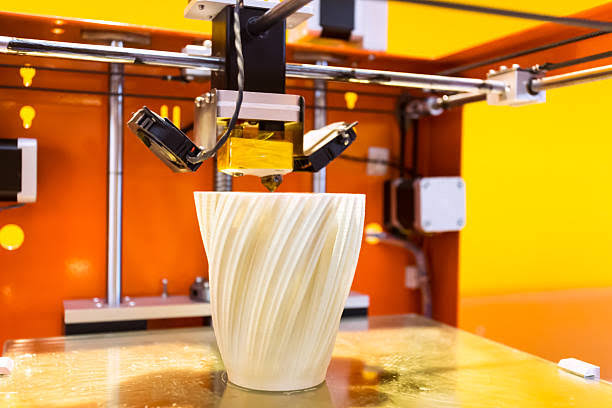
What is 3D Printing
3D printing is a step-by-step process geared towards the fabrication of products or parts with the use of three-dimensional digital models and additive materials. The three-dimensional digital models can be created from scratch using 3D computer programs or downloaded as files from several sources.
The digital model serves as a template that allows the user to build and make modifications to how the product will turn out.
Additives used in 3D printing could be of various types; Acrylonitrile Butadiene Styrene (ABS), Carbon Fibre Filaments, Conductive Filaments, Metal Filaments, etc. When the 3D models have been uploaded into the printer, it begins to layer all additives with respect to information from the models to create the desired product.
Rising Popularity of 3D Printing in Different Industries
3D printing is constantly gaining much popularity due to cutting-edge technological advancements, evolving value chains, and market innovations across all sectors.
This rapid growth is a result of active participation and adoption from all major industries which include; Automotive, Aerospace, Construction, Education, Manufacturing, and many more.
This technology comes with several benefits that create an evolving value chain for organizations willing to adopt it. Now, manufacturers are able to print parts that require complex designs in a quick and convenient manner.
Advantages of 3D Printing Technology
The major reasons for the rapid growth of 3D Printing technology are attached to the benefits derived from it. This technology has unlocked a whole new way in which products can be designed, how fast they can be designed, and how accurate the final product will turn out.
Below are the major advantages derived from this technology.
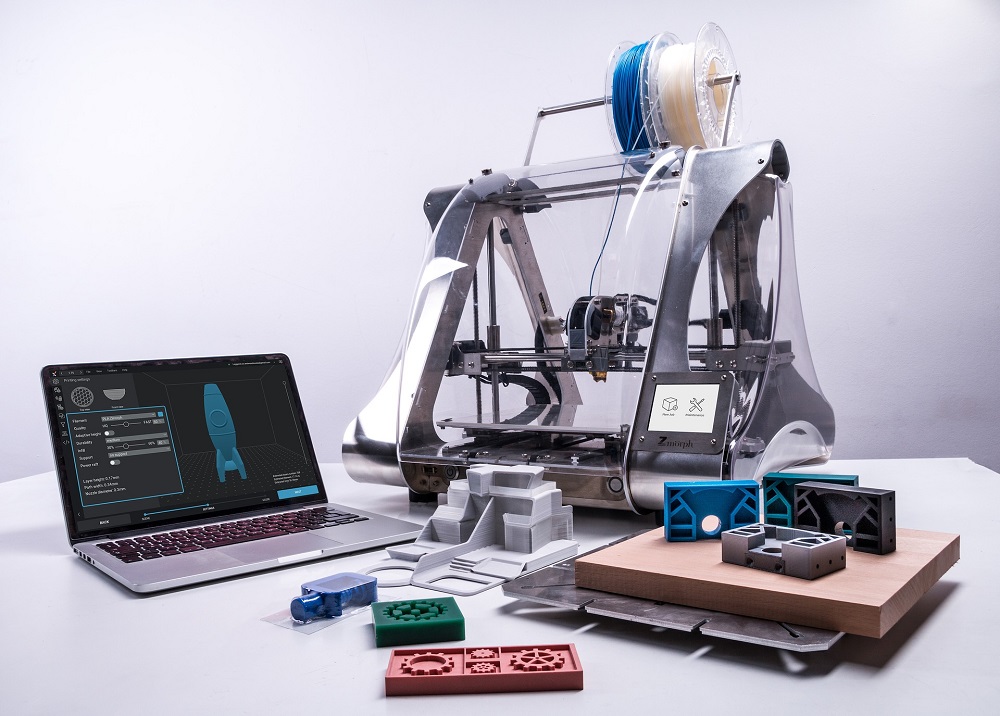
Flexibility in Design
Frequently across several industries, there are certain situations where parts are needed to be built to meet specific requirements. Some of these requirements may be near impossible through traditional means, but with the right 3D printing models and additive materials, the product can be produced accurately.
3D printers give users the chance to make design modifications such as applying multiple materials into a product, creating hollow cavities within solid parts, and mixing color combinations in unique ways.
This type of flexibility comes with ease as most of the design work is already done on the CAD (Computer Aided Design) software before printing commences.
Efficiency in Prototyping and Refinement
Prototyping is a key step in product development because it allows making frequent modification or refinement on products till they meet necessary requirements. This ensures all the details of a design are finalized before mass production.
3D printing ensures prototyping efficiency because it can create a functional product in a short period of time.
Cost Effective for Small Production
3D printing is a technology that can save small-scale producers from incurring huge costs during production. Unlike the traditional production method where much more time and money is spent on building a new mold for different products. A single 3D machine can be used to create any type of product because it doesn’t require the use of molds.
In terms of customization, 3D printers ensure costs are low because all modifications are carried out on the CAD at the initial stage of production.
Also, it ensures a lesser amount of additive is applied when compared to the traditional means of production. 3D printing has given small-scale businesses a chance to compete in the market without having to spend huge amounts in setting up huge factories.
Wide Application of 3D Printing In Various Industries
3D printing has become so versatile that its application in several industries is on a constant rise. The industry has become so big to the extent that countless materials we use are products of 3D Printing.
This cuts through basic products like kitchen utensils, down to complex products like prosthetic limbs.
Injection Molding Industry
Injection molding involves the injection of molten plastic into a preformed metal mold to form plastic products/ parts. When molten plastic attains a certain temperature, it is injected into the mold and left to cool until it becomes solid enough to hold the mold’s shape. Most of the plastic products around us are made through this industrial process.
3D printing plays an important role in the injection molding industry because it is capable of creating rapid prototyping, low-volume production, design optimization, and cost-effective mold making.
Injection molding serves as a backbone in plastic production. However, it can be enhanced to meet the complex design needs through insert molding and over-molding processes.
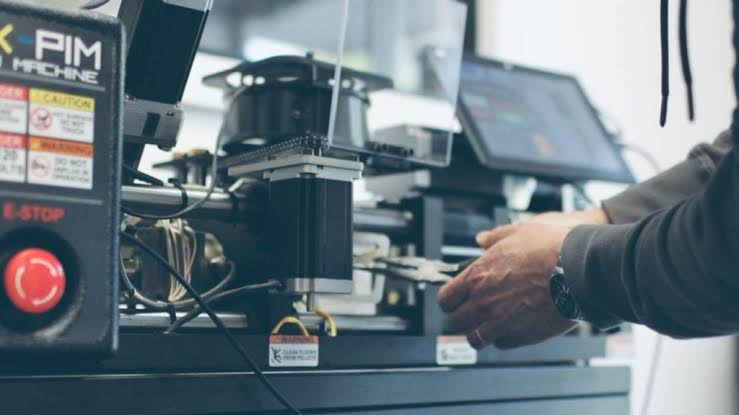
Healthcare and Medical Applications
The healthcare and medical sector makes use of 3D printing to improve their services. Over time, this technology has been developed enough to meet the rising needs of patients. It is well-designed to ensure a customizable and affordable form of healthcare for the public.
The use of 3D printing is significant in various medical departments for making tailor-made prosthetics, bone and joint reconstruction, dental application,s etc. It has facilitated medical research in so many ways that medical practitioners may not have to spend significant amounts of money to execute.
3D printing has also been adopted for surgical preparations. This is done using bioprinters to create artificial living organs or tissue that mimic human organs on a miniature scale. They can as well be studied, and used in practice ahead of real surgical procedures.
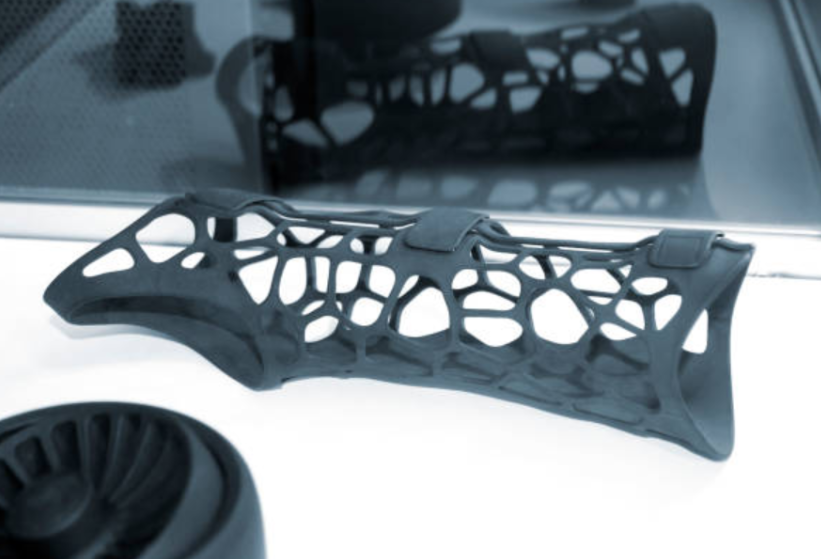
Aerospace and Automotive Applications
These sectors are significant to technological development, hence the vast adoption of 3D printing. With the constant emergence of upgraded vessels in the aerospace and automotive sectors, more complex parts are required for them to scale through.
3D printing is frequently used to create parts with complex geometries to reduce weight and improve performance. Some of the parts include; lights, side mirrors, surrogates etc.
3D printing has been of great use in these sectors because it allows assemblers to consolidate multiple parts into a component, create desired surface finish, and also facilitate part orientation.
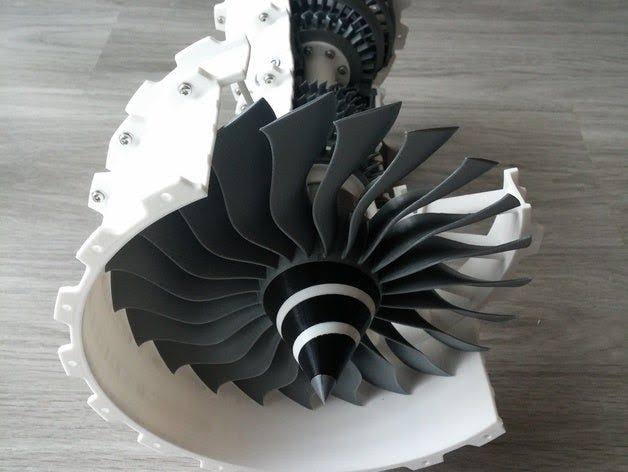
Types of the Most Popular 3D Printers
Just like all other emerging technologies, 3D printers come in several forms with distinct sizes, prices, and capacities. For this reason, users have the choice of selecting from several alternatives the type of printer which will carry out the project efficiently.
Below are some of the best out there.
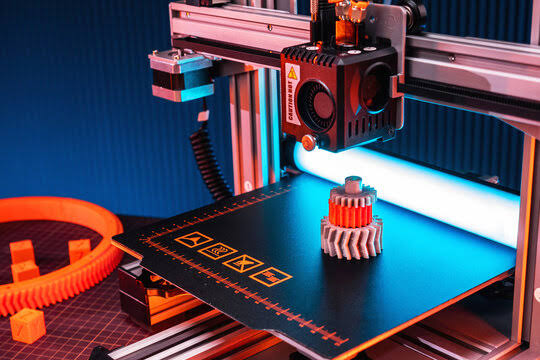
Fused Deposition Modelling (FDM) Printer
FDM printer is designed to make use of thermoplastic as feedstock which is usually in the form of filaments or pellets. This machine ensures feedstock is extruded through a heated nozzle and later joined together to create 3D products. Then the heated nozzle melts the feedstock into 2D layers on the build platform before being fused together to form a 3D part.
As one of the most popular printers, FDM is assured to create strong and durable functional products. Its versatility allows users to choose the exact type of print quality, speed or sturdiness their product requires.
Stereolithography (SLA) Printer
A stereolithography printer is built to utilize light sources such as a laser or projector to transform molten resin into solid plastic material. This process is known as Vat Photopolymerization.
Of all 3D printings, objects made from SLA tend to have the best accuracy, resolution, and smoothest surface finishes. When there is a need to create a product with maximum control of air or fluid flow, SLA stands as the best. It possesses a watertightness feature that makes it reliable for use in biochemical research, automotive use, and consumer use.
Selective Laser Sintering (SLS) Printer
Selective Laser Sintering is a 3D printer that makes use of a high-capacity laser for sintering small particle polymer powder into solid parts. This printer has been in use by manufacturers for a while, but the frequent updates have made it affordable to everyone. SLS fosters high productivity at a lower cost and is also capable of handling multiple materials.
Best Material for Making 3D Models
3D products can be made from several polymer types. Therefore, selection should be made by considering the type of part to be produced, the purpose it’s meant to serve, and the size it’s meant to possess.
Below are the various types of materials and their properties.
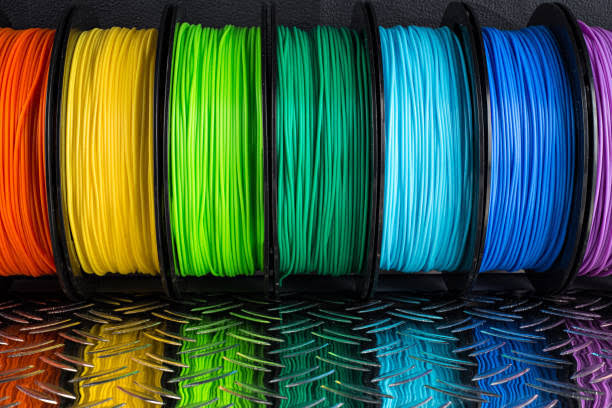
PLA (Polylactic Acid)
PLA is a 3D printing material primarily made from plant starch. This material is strong, hard, and highly biodegradable. It stands as the most environmentally friendly material for 3D printing as they are obtained from natural, renewable sources such as corn starch, potato starch, sugar stick, etc.
This material is naturally transparent but can be colored to various levels of translucency. Due to its natural form, PLA is the strongest, and most rigid material used for 3D printing. It reduces warping or shrinking errors, and also gives the printed material a glossy look.
The material can be used in food packaging, disposable tableware, upholstery, garments, and surgical implants, etc.
ABS (Acrylonitrile Butadiene Styrene)
This is a thermoplastic polymer made up of three monomers; Butadiene, Acrylonitrile, and Styrene. Each monomer adds its unique quality to the created part. Butadiene gives the product a rubbery texture to make it strong; Acrylonitrile adds rigidity and chemical resistance; while Styrene provides a shiny and smooth texture.
All these features combined makes the product more durable and also allow printing to be done swiftly.
Since ABS is strong and capable of withstanding hot temperatures, it is adopted in making home appliances, lego toys, and piping systems. ABS is capable of absorbing moisture from thin air (Hygroscopic) therefore, it is important to store it in an airtight container.
PETG (Polyethylene Terephthalate Glycol)
This material is a combination of Polyethylene Terephthalate (PET) and Glycol. This combination is done at the molecular level to offer some extra chemical properties that reduce overheating associated with PET.
Characteristics associated with PETG include chemical and impact resistance; ductility, transparency, and hardness. All these features make it applicable for food and drinks packaging; medical and pharmaceutical applications; Retail stands and displays and also as insulators.
This material is versatile as it can be injection molded, extruded as 3D printing filament, or sheet extruded. PETG stands out from other materials because its polymer chains can be recovered which makes it recyclable. It has an excellent layer of adhesion, warp resistance, and odorlessness when printing.
Nylon
This is a semicrystalline polyamide majorly used in the textile industry. Although, it can also be used for 3D printing when it is combined with carbon fiber, which helps to eliminate some difficulties and also boost its mechanical properties. There are usually printing difficulties with nylon because it absorbs moisture.
In 3D printing, Nylon materials are mostly used to produce hard-wearing materials like fasteners, cable ties, and gears due to their impact resistance, abrasion resistance, and toughness. Nylon is highly resistant to alkalis and organic chemicals such as fuel and oil. It is highly flexible and can be used for materials that are exposed to harsh loading conditions.
How to Start 3D Printing in the Simplest Steps
Over the years, 3D printing has evolved to a stage where it can now be done by anyone. All you need to do is get the needed printing machine and software suitable for your designs. Here is a step-by-step guide to help in getting started with 3D printing.
Choose a 3D Printer
There are several types of 3D printers. Before selecting any of them, you should consider the type of product that is meant to be created. This is because the printers have a distinct way of operating. Some printers make use of lasers while others use ultraviolet light beams to process additive materials.
Another thing to consider is the budget and area of use. All types of printers vary in price. A 3D printer meant to be used for industrial purposes is quite more expensive than those meant for light production. Some other features to look out for in a 3D printer include build volume, print bed size, bed leveling, number of extruders, and so on.
Design 3D Models and Prepare Model File
Designing a model is the primary stage of 3D printing. This is because the ways and patterns the models are designed will determine the product outcome. Models are designed using CAD (Computer Aided Design) software which is later converted into basic instructions that the 3D printer can understand.
CAD is a powerful software that allows users to draw and modify designs with complex geometries in either 2D or 3D versions. Designing 3D software may require a little bit of expertise because sometimes, the design may be too complex and cause difficulties while extruding.
Although, there are some software and special tools that make model designing much easier for users with little or no experience.
Convert the 3D Model into Printable Layers
Whenever a 3D model is designed, the file is stored in STL (Standard Tessellation Language) format. This is the main format CAD and 3D model publishers utilize to store 3D models.
This format also helps to translate the geometry of a 3D product without texture, color, or other qualities. STL makes use of a series of interconnected triangles to reproduce the surface geometry of the 3D model.
3D models need to be converted into STL format because it serves as an intermediary between 3D modeling software and 3D printing hardware. This must be done because 3D models are too large and complex for printers to read.
Set Up the Printer
The first thing to do when setting up a printer is to check if it is fully calibrated. This needs to be checked especially when the printer has just been hauled around. This will help reduce excess wastage of filament material or damage to the equipment.
Another thing to do is check if the frames are square and if the printing beds are level to prevent it from being crooked or lopsided. A situation where the machine is unlevelled can cause a hot print head which will melt plastic filament into the print bed. Some printers come with an inbuilt auto-leveling feature but if it is a screw mold, you will have to adjust the screws in each corner of the print area to get the job done.
3D printers have a lot of moving parts therefore, lubrication needs to be carried out on a regular basis to avoid wear and tear. After all these, the filament material is fed into the extruder while the printing speed is regulated.
Start and Monitor the Printing Process
Once the Printer setup is done, the next thing to do is “Slicing”. This is done to allow the 3D printer to calculate the actual amount of filament needed to print the model. The slice file is uploaded into the printer to kickstart the Printing process.
Once the operation has commenced, printing activity can be observed through the available transparent panel if available; if not, they can be monitored physically or remotely.
Post Processing
This final stage requires users to remove the support system (if available) to expose the filament on the surface of the model. With the aid of sandpaper, models can be made smoother to give them a fine surface when coloring and polishing are being done.
Models with large or multiple parts should be properly welded or assembled to bring out their design.
Reputable 3D Printing Service Provider: FOW Mould
When you decide to dive into mass production, don’t hesitate to reach out to us at FOW Mould for the best injection molding service and design. We pay close attention to our client’s needs in order to transform them into reality.
Advanced Equipment
Thanks to the use of automated and advanced equipment, our products have always been in tune with clients’ requirements. All machines and equipment in our company are subsequently updated to ensure they keep us ahead of our competitors.
We own 21 CNC machines with a tolerance level of +-0.02mm and 7 high-speed CNC machines with a tolerance level of +-0.002mm. We deliver quality services alongside production speed to meet our non ending demands.
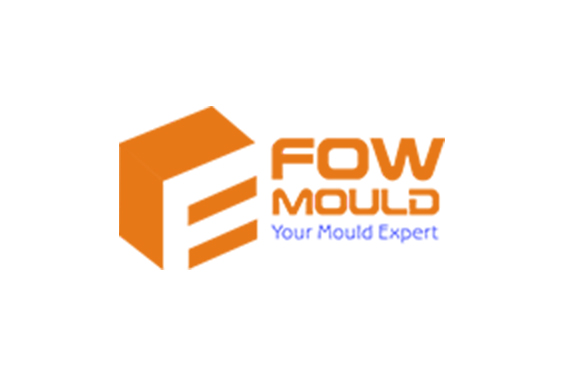
Fast Sampling in One Week
Our team of designers and mold engineers are professionals with optimum experience levels. Once our clients have submitted a model that indicates the type of mold or part they need, a sample is immediately fabricated within one week.
During production, all details of the design are focused on to ensure our clients get products that will ease their manufacturing process.
Rich Production Experience
Owing to our multiple investments in state-of-the-art industrial 3D printers, we are able to produce high-resolution prototypes with full precision. Due to lengthy production experience, our team possesses an advanced skill set in handling additives and prototype designs of all sizes and complexity.
We provide 3D printing services extended across several industries such as plastic bucket, furniture, baby product, and home appliance.
Conclusion
3D printing has been around for quite some time and thanks to the constant research, this technology can now be fully accessible without a huge amount of investment. It has come a long way by setting footprints across all major industries, creating a chance to tap into the endless possibilities ahead.
This article has discussed extensively how to 3D print something from the best plastic injection molder.FOW Mould is a professional manufacturer that can be trusted with your 3D printing needs. All you need to do is contact us today to enjoy every inch of perfection we have to offer.
